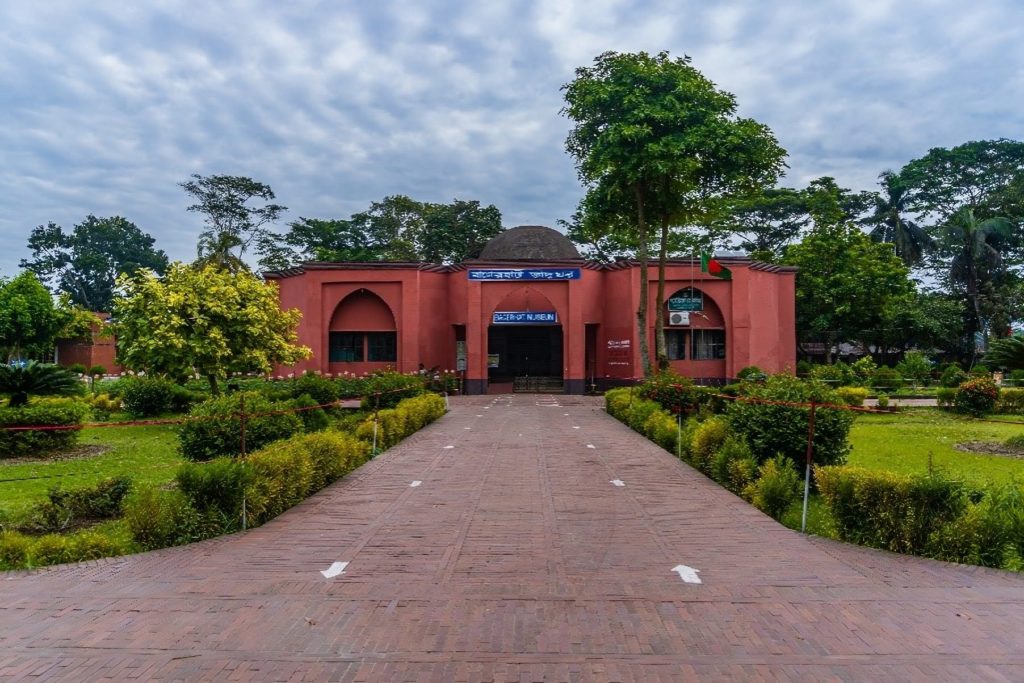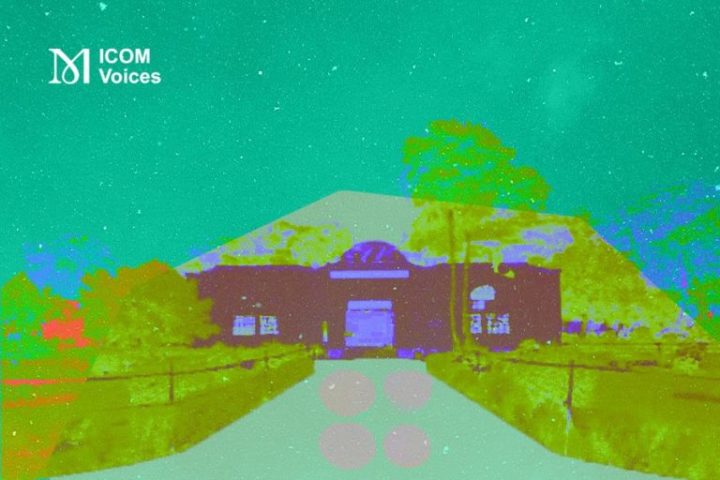
Samana Fatema
MA Student, Department of Archaeology, Jahangirnagar University (Bangladesh)
Museums have no borders,
they have a network
November 26, 2024
Keywords: Site Museum, Heritage, Khalifatabad, Bagerhat
The Bagerhat Regional Museum, established in 1994 by the Department of Archaeology of the Government of Bangladesh, plays an essential role as a site museum near the renowned Sixty-Domed Mosque (Shaith Gumbad Mosque) in Bagerhat, a UNESCO World Heritage site. This museum not only preserves the artefacts and architectural remnants of the medieval city of Khalifatabad but also offers visitors an immersive glimpse into the cultural and historical heritage of the region.

The Establishment and Purpose of the Bagerhat Museum
The Bagerhat Museum was built to conserve, exhibit, and educate people about the historical and cultural legacy of the medieval city of Khalifatabad, now located in the modern-day Bagerhat district. The Sixty-Domed Mosque, the centerpiece of this ancient city, serves as the focal point around which the museum is structured. The site museum aims to house artefacts and materials uncovered during archaeological excavations in the surrounding mounds, including Khan I Jahan’s residence, roadways, kitchen, and dining areas, which have provided insight into the daily lives and urban planning of the region’s early inhabitants.
Ulugh Khan I Jahan and the Medieval City of Khalifatabad
Bagerhat’s archaeological significance is tied to the historical figure of Ulugh Khan I Jahan, an important Muslim ruler believed to be a provincial governor under the Delhi Sultanate. After arriving in the area from Jessore, Khan I Jahan settled along the banks of the Bhairab River, which was crucial for trade and communication. His initial landing was in Barobazar, present-day Jhenaidah district, where he began his mission to spread Islam and establish Muslim dominance in the southern region of Bengal.
Khan I Jahan and his followers eventually moved to the Bagerhat area, where they built a vast number of religious and secular structures. Historical sources suggest that up to 360 mosques, bridges, roads, water tanks, mausoleums, and other public buildings were constructed in the Bagerhat area, establishing it as a significant Muslim settlement in medieval Bengal. Key structures like the Bibi Begani Mosque, Singair Mosque, Chunakhola Mosque, and the Mausoleum of Khan I Jahan still stand as enduring symbols of his architectural vision.
The Museum’s Layout and Exhibits
The Bagerhat Museum is a thoughtfully designed, single-story building occupying an area of 520m2. Located southeast of the Sixty-Domed Mosque, the museum is accessed through the mosque’s southern gateway. The building has a central hall surrounded by octagonal galleries, designed to harmonize with the mosque’s architecture and the regional aesthetic of Sultanate domes.
The museum’s galleries house a diverse array of artefacts and exhibits, each thoughtfully curated to reflect the history and material culture of Khalifatabad. The introductory gallery features a map of Bangladesh, highlighting archaeological sites with a special focus on the Bagerhat district and the city of Khalifatabad. Panels in Bengali and English provide visitors with contextual information, including a layout of the galleries and their contents.
The museum features a model of the ancient city of Khalifatabad which showcases the locations of mosques, tombs, and other significant structures, offering visitors a three-dimensional understanding of the medieval city’s urban landscape. The first gallery displays artefacts such as terracotta plaques, stone and terracotta utensils, glazed tiles, and animal bones. These items, arranged in glass cases, shed light on the daily life, craftsmanship, and artistic expressions of the inhabitants of Khalifatabad.

Showcasing a Rich Multicultural Heritage
The museum also includes a photo gallery featuring images of Sultanate and Mughal period buildings, illustrating the evolution of architectural styles in the region. Noteworthy among the exhibits is a taxidermy of a crocodile that once lived in Thakur Dighi, a large tank near the Sixty-Domed Mosque. This exhibit connects the museum’s visitors with the natural history of the area.
Artefacts and information about other medieval cities, such as Shahar Muhammadabad (Barobazar) in Jhenaidah, are also displayed in the museum. Barobazar, believed to be the initial site where Khan I Jahan began his journey, is represented through various exhibits that include relics and historical texts.
Evidence of Pre-Muslim Settlement
The museum does more than display Islamic heritage; it also highlights the pre-Muslim presence in the Bagerhat area. Excavations have uncovered Hindu and Buddhist sculptures (such as the iconic Akhshobhyo statue found during the digging of Thakur Dighi) which underscore the region’s rich and diverse religious history before the arrival of Islam. Other significant finds include sculptures of Vishnu, Chamunda, and Buddha, as well as remains of Buddhist stupas in the nearby regions of Kopilmuni and Bahrat Bhayana. These discoveries are crucial in reconstructing the multi-layered history of the Bagerhat area and illustrating the transition from Hindu-Buddhist influence to Muslim rule.
Insights from Archaeological Finds
The Bagerhat Museum presents a comprehensive view of the urban and commercial life that thrived in the medieval city. The abundance of stone objects like plates, pestles, and pillars, dating back to the 14th and 15th centuries, indicates that Bagerhat and Barobazar were bustling trade centers. Additionally, the discovery of carved bricks, terracotta plaques, and glazed tiles suggests that these cities were adorned with decorative architectural elements, signifying an advanced level of artistic and architectural development.
The Bagerhat Regional Museum offers valuable insights into the history, culture, and architecture of the medieval city of Khalifatabad and its surroundings. Through its exhibitions, it educates visitors about the cultural transformations that have taken place over centuries in the region, from Hindu-Buddhist influences to the establishment of Islamic rule. By preserving and presenting these treasures, the museum ensures this UNESCO World Heritage site remains accessible and appreciated, underscoring the enduring significance of Bagerhat’s rich history.
REFERENCES
Ahmed, M. N. and Kabir, N. 2019. [Online]. A Case Study of Bagerhat Museum and Representation of Khalifatabad in the Museum. Journal of RSTU. Available at: https://www.academia.edu/99820461/Bagerhat_Museum_final_for_publication [Accessed 8 Oct. 2024].
Ahmed, N. 1984. Discover the Monuments of Bangladesh. Dhaka: The University Press Limited.
Ahmed, N. 1989. The Buildings of Khan Jahan In and Around Bagerhat. Dhaka: The University Press Limited.
Dani, A. H. 1961. Muslim Architecture in Bengal. Dacca: Asiatic Society of Pakistan.
Guha-Thakurta, T. 2004. Monuments, Objects, Histories: Institutions of Art in Colonial and Post-Colonial India. New York: Columbia University Press, pp. 43-82.
Hall, S. 1997. Representation: Cultural Representations and Signifying Practices. London: Sage Publications in association with Open University.
